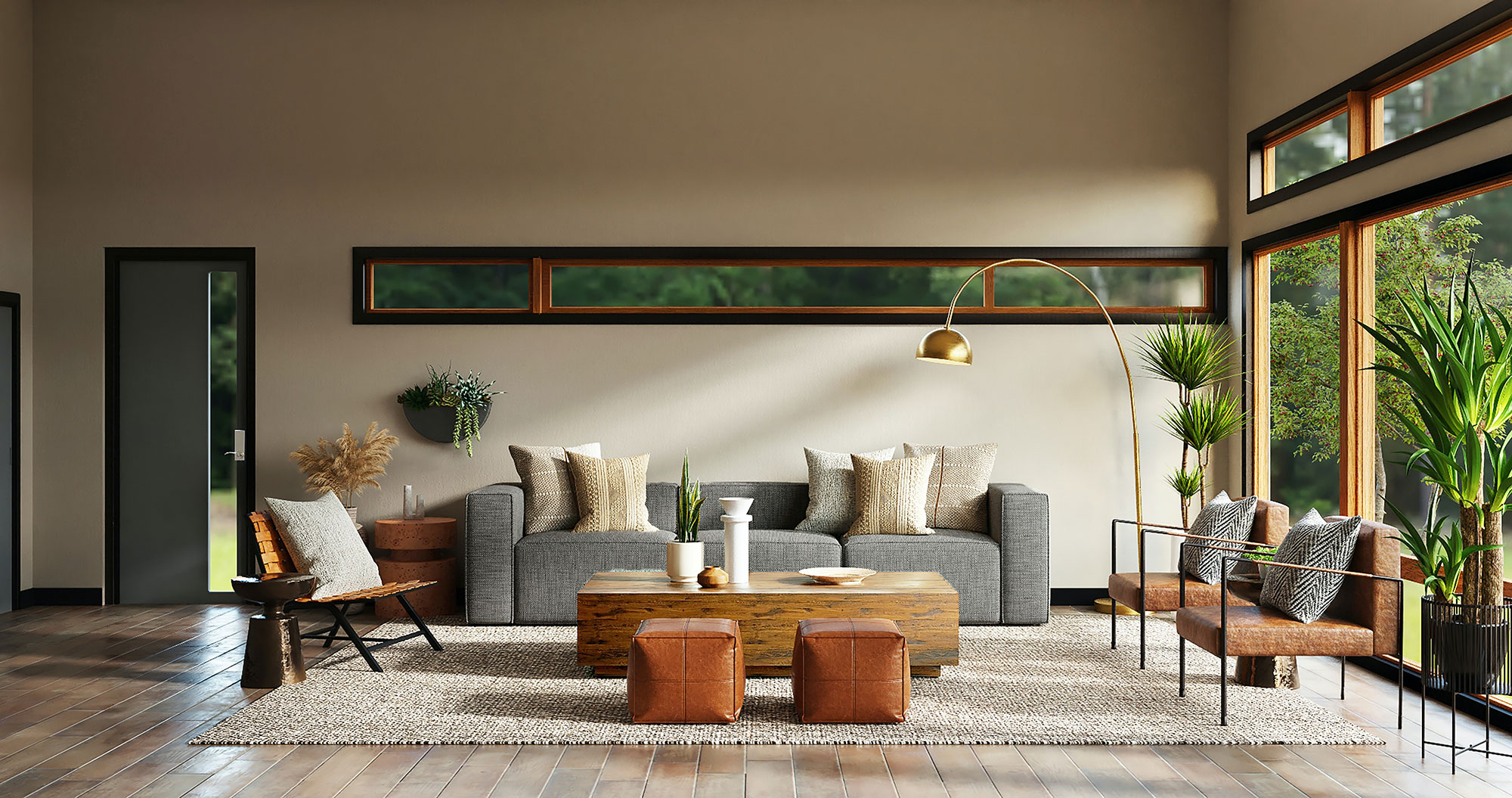With 3D rendering, architects can show their potential clients what the building will look like before they’ve even started construction. This is especially helpful for interior designers who want to make sure that their ideas are translated into real-life spaces with as little hassle or modification necessary.
3D rendering services have become an increasingly popular choice for interior designers who wish to display their work in the best possible way. The right renderings can make or break a design, giving it a professional and polished look for use on websites, brochures and other marketing materials.
A good rendering will also convey an impression of luxury and quality. It is essential to design spaces such as offices or hotels, where your clients need to impress their customers with the quality of their work.
What is 3D rendering?
3D rendering is a process that renders (creates) computer-generated images from a three-dimensional model. It is also called 3D modelling, 3D construction, 3D computer graphics, or computer-aided design.
A 3D rendering software generates 3D models and then converts them into 2D images. This technique is used in various fields, including architecture, animation, engineering, industrial design, medical imaging and molecular modelling.
3D rendering allows designers to create more realistic 3D models of the objects they work on. You can do rendering with various methods, with the three most common being ambient occlusion, bump mapping and specular highlighting. The latest report by global market insights, 3D Rendering Market, is estimated to grow at over 20% CAGR between 2020 and 2026.
By using 3D rendering in interior design and architecture, artists can create a virtual representation of their ideas indoors without building it. Instead, they can recreate the space they want to see with accurate measurements and real-life contrasts of light, making designs true to their inspiration.
Rendering helps the interior designer draw up the design plan for a space which can then be 3d modelled by professionals who know how to capture the landscape of that space accurately. Using 3D software, architects can digitally sketch out their plans in 3D and use them as blueprints for interior designers or fabricators.
The smaller objects such as furniture are part of this process and are recorded with shading and shadows for a look that is accurate but still looks like real life. Since architectural plans include the dimensions of room walls, ceilings, flooring and doors at certain spots on a room’s floor plan, architects need these types of plans when communicating with other vendors or during construction of a job site.
What is interior design?
Interior design is the process of developing a plan for the interior space of a building. The design enhances the interior of an area to achieve a healthier and more aesthetically pleasing environment. It has been defined as “the art and science of enhancing the interiors of homes or other living spaces.”
Many elements go into successful interior design, including architectural design, interior decoration, product selection, textiles, furniture arrangement and lighting. The process typically starts with understanding the client’s goals and then continues with topics like colour selection, furniture layout, determining room needs, and other styling aspects.
Why 3D rendering is essential for interior design?
3D rendering helps interior designers visualise their work before appreciating the final result. Without it, they would constantly guess how a client will respond to the designs and always have to transform their designs based on client feedback.
At 3D walkabout, we use customised interactive 3D interior design models of the future home to enable clients to have enough information to make an informed choice about the finished product.
Not only does it allow us to show them the features of their chosen design, but it also allows us to walk through the architectural visualizations so that they understand what their options are for customization.
3D rendering is an increasingly popular service for interior designers because of its ability to create a virtual staging or a timeline of an interior and provide the interior designers with an architectural model that keeps improving with each new step, offering designers regular opportunities to make changes.
Completing the three dimensions height, width, depth with complex components such as mouldings, fixtures, lighting, and textured floors presents daunting challenges for any interior designer, regardless of experience. 3D allows for changes to be effected quicker and in a cost-effective manner.
Qualities to look for in a professional 3D interior rendering servides provider
There are many 3D rendering service providers in the market. But not all of them are great. The key to creating a great 3D rendering service provider is problem-solving. Some people call it visualization and called drawing because it involves “drawing” your clients’ visions into existence with room for modifications.
High quality rendering
An excellent 3D rendering service provider should be professional and have a lot of creativity to create realistic representations of the architecture, landscapes, or products they are working on using the latest technology and software. They will invest in the newest technology and hire only the best talent to produce amazing content for their clients.
Technical know-how
The rendering service provider should take a model from 3D software and output it efficiently. 3D rendering is an expensive process, and if the provider can’t deliver content fast, it will not be profitable for them or the client.
A great 3D rendering service provider should have skills in both design and engineering and the know-how to use the latest technologies to get the job done.
Creative & Observant
A great 3D rendering service provider should have an eye for detail, and they should create detailed images or visualization that make them stand out from the rest. They should also provide quality service and be responsive to customer needs.
Affordability
A great 3D rendering service provider will not overcharge their clients for their services or products but instead, charge them a reasonable price that is competitive within the industry. A great 3D rendering service provider should offer a variety of quality services, have a team of qualified and professional artists, and be reasonably priced. The prices should be fair and competitive to attract more clientele.
Think out of the box
A great 3D rendering service provider should think outside the box and provide their clients with various options for any problem that may arise or necessary changes. Working closely with clients helps create a unique customised solution. A great 3D rendering service provider is not limited by their capabilities or skill sets.
Why should you use 3D interior rendering services?
Professional building plans
Today, 3D rendering is a powerful tool to create professional floor plans, home designs and 3D marketing materials for any real estate project. Today’s latest software technology has made what was previously thought impossible possible.
You get a quality end product
3D rendering is an increasingly important part of traditional real estate marketing. A 3D walkthrough allows buyers to visualise the property and enable them to be more emotionally attached to a property than a stock photo. Whether you sell commercial or residential properties, 3D renderings are becoming a vital part of your selling or leasing strategies.
Provide accurate data
Using a 3D rendering not only gives potential buyers the chance to see exactly how your property will look with their own eyes, but it also provides valuable information about its interior and exterior features.
By providing essential details about size, shape, and lifestyle, you equip potential customers with everything required to make an informed buying decision. It can help them figure out if a product is a good fit before purchasing.
Time- saving
Using 3D renderings of houses can also save time in the construction process since so many additional features that weren’t provided on paper plans or photos can be added. It might also expose issues like moisture patterns and mould growth earlier, which you can address before they affect the house’s structure or become expensive repairs.
Reasonable pricing
3D renderings can minimise errors and give the client a clear picture of what they’ll be getting. In addition, the accuracy of the 3D images will be unsurpassed, and it is especially true for investors. The price is a significant consideration when evaluating properties. In addition, a high-quality 3D image will help make the development more believable and appealing before incurring any costs increasing the budget
3D rendering has become an increasingly popular way to create interior renderings. Using this technology, you can better understand the finished product. To learn more about this process, be sure to visit 3D Walkabout today.


